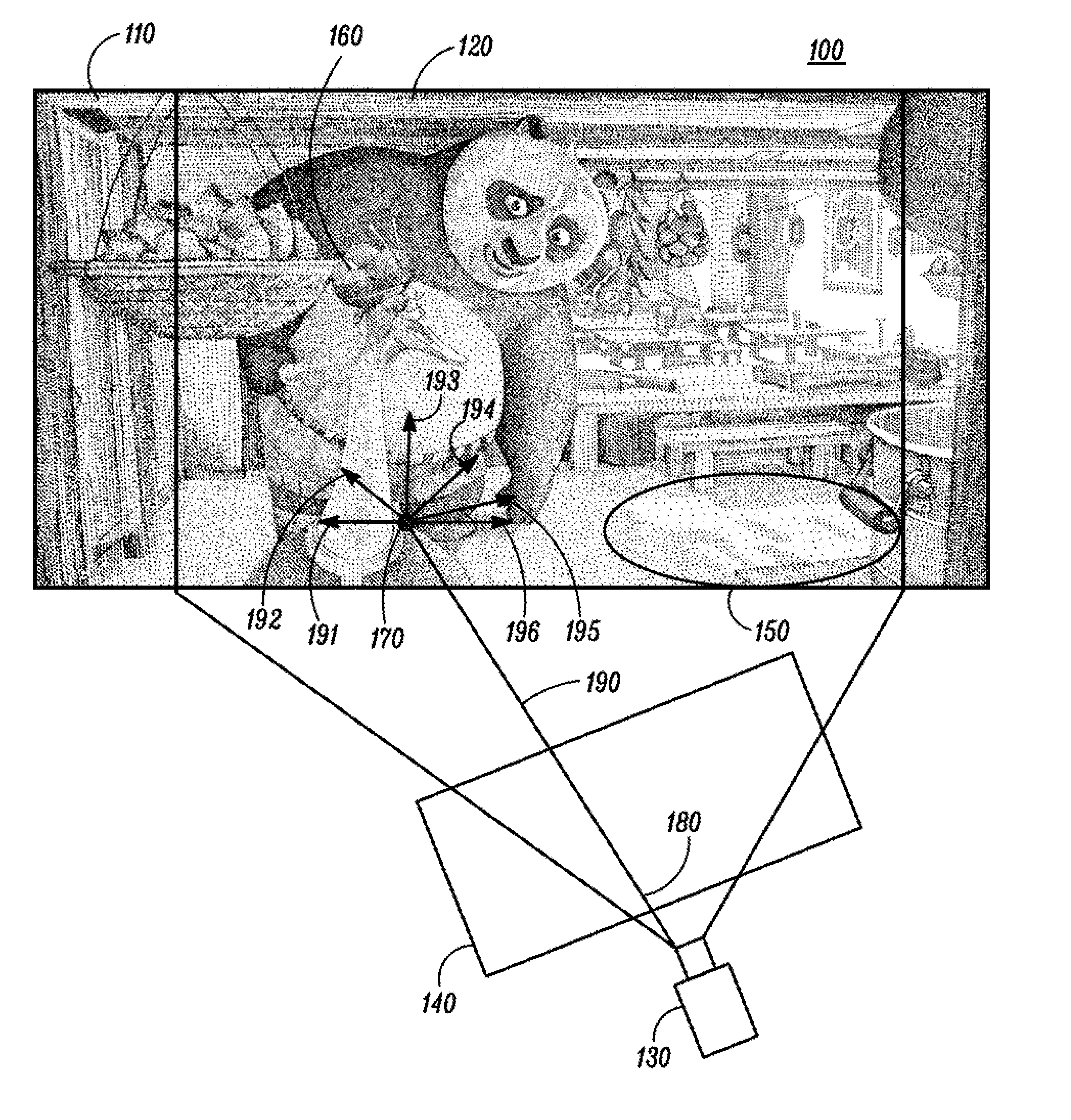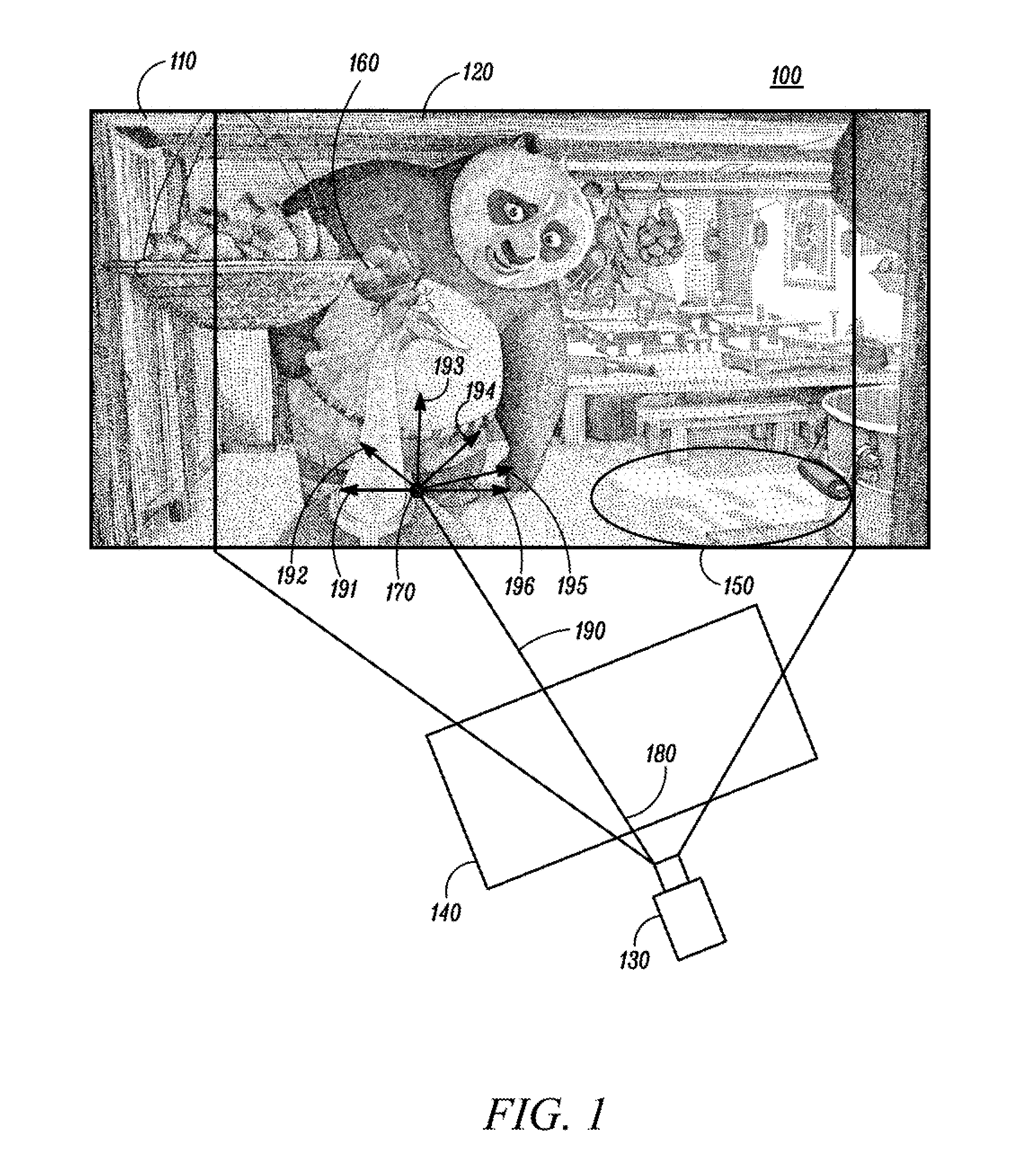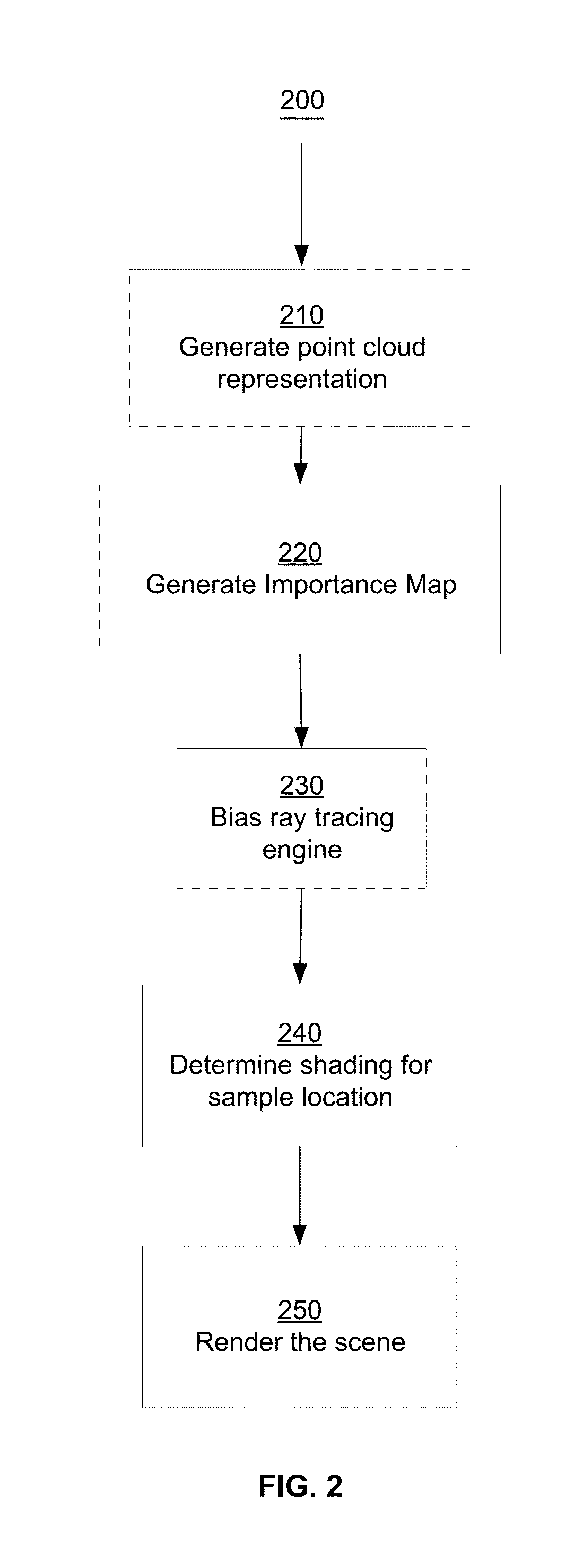Point-based guided importance sampling
a point-based, importance-based technology, applied in the field of computer graphics, can solve problems such as spotty shading, noisy illumination, and unrealistic and unwanted illumination rendering
- Summary
- Abstract
- Description
- Claims
- Application Information
AI Technical Summary
Benefits of technology
Problems solved by technology
Method used
Image
Examples
Embodiment Construction
[0022]The following description sets forth numerous specific configurations, parameters, and the like. It should be recognized, however, that such description is not intended as a limitation on the scope of the present invention, but is instead provided as a description of exemplary embodiments.
[0023]FIG. 1 illustrates an exemplary scene 100 lit by indirect lighting 150. The scene 100 may be a snapshot taken by a virtual camera 130, viewing a virtual world 110. The box 120 highlights the portion of the virtual world 110 that may be visible to the virtual camera 130. Indirect lighting 150 may be light from an out-of-view light source, such as a light bulb, the sun, or the like. The scene 100 may be rendered using a conventional ray tracing engine.
[0024]A snapshot of a scene 100 using a ray tracing approach may be rendered by calculating the path of rays from a virtual camera 130 through pixels in an image plane 140 and then into the virtual world 110. For example, consider ray 190. R...
PUM
 Login to View More
Login to View More Abstract
Description
Claims
Application Information
 Login to View More
Login to View More - R&D
- Intellectual Property
- Life Sciences
- Materials
- Tech Scout
- Unparalleled Data Quality
- Higher Quality Content
- 60% Fewer Hallucinations
Browse by: Latest US Patents, China's latest patents, Technical Efficacy Thesaurus, Application Domain, Technology Topic, Popular Technical Reports.
© 2025 PatSnap. All rights reserved.Legal|Privacy policy|Modern Slavery Act Transparency Statement|Sitemap|About US| Contact US: help@patsnap.com



